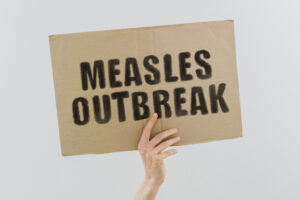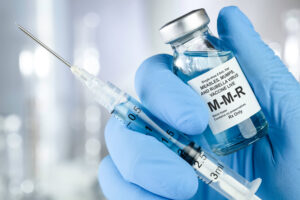If you’ve been following the TAG newsletters for the last two weeks, you’ve read an overview of FDA’s draft guidance on controlling Listeria monocytogenes (Lm) in ready-to-eat (RTE) facilities, and discovered the Agency’s recommendations on the “where, when, and how” of environmental sampling. This week, we finalize our review of the draft guidance, with explanation of FDA’s recommendations on what to do if you find a positive result on a food contact surface (FCS). At first glance, it may seem that FDA is saying it’s okay to ship product when you have a first FCS positive result. But, as I hinted at last week, I am not sure that this is quite what FDA meant to infer. And, even if it were, it’s not likely the smartest thing to do, because if you later have a second positive from that same site or the same line, you could be looking at a recall – all the way back to the first positive result. So let’s take a look at what FDA says about finding a positive and what I see it as meaning to you. Corrective Action if Listeria spp. is found In a general vein, FDA includes a table (page 50) defining the recommended corrective action to be taken when any Listeria species is found in an environmental sample. As noted below, the table includes what to do after a first, second, third, or even fourth, positive is found based on whether it is on an FCS or non-FCS and if the food being produced does or does not support the growth of Lm. (FDA also notes that non-growth foods intended for establishments such as hospitals and nursing homes should be treated as foods that support growth.) Following are the recommendations for corrective action if Listeria is found as the result of first through fourth tests: Test# Recommended Corrective Actions #1 Both Non-FCS and FCS: Clean and sanitize the area of the positive and retest during the next production cycle.
FCS: Also conduct a comprehensive investigation. #2 Both Non-FCS and FCS: Intensify the cleaning and sanitizing, possibly disassembling equipment, as well as the sampling and testing. FCS: Conduct a comprehensive investigation. If the food supports growth, also hold and test the product and reprocess, divert or destroy product on hold if there is a positive product. For food that does not support growth, consider hold and test. #3 Non-FCS. Conduct a root-cause analysis FCS in which the food supports Lm growth: Stop production and consult experts for comprehensive investigation; Intensify cleaning and sanitizing (e.g., steam equipment) and sampling and testing. Resume production with product hold and test until 3 consecutive days of product and FCSs are negative. FCS in which the food does not support Lm growth: Intensify cleaning and sanitizing (disassembling equipment) and sampling and testing; Expand comprehensive investigation; Hold and test product. Reprocess, divert or destroy positive product lots. #4 FCS in which the food does not support Lm growth: Stop production and consult experts for comprehensive investigation Along with detailing the information in text, FDA provides this same information a third time in two flow charts (such as this Routine Environmental FCS Sample, see below), focused on non-FCS and FCS. And it is the recommendations – repeated in the table, the flow chart, and in text – for corrective action if Listeria is found in your first test on an FCS that most concerns me. FDA says only to clean and sanitize the area of the positive, to retest during the next production cycle, and to conduct a comprehensive investigation. It says nothing about holding product – which could certainly come back to bite you if a positive is detected in the “retest during the next production cycle,” or even if the “comprehensive investigation” turns up an issue that may have caused finished product to become contaminated. Another question that has arisen is whether you should report into the Reportable Food Registry if you have not held product, and you get a first FCS positive? Can you wait and see if you get a second positive and only then report it? As noted above, if you do get a second positive, would a recall implicate the product that was produced when you had the first positive? Lots of questions, and the guidance falls short on what the regulatory expectations are around the RFR and when to take further recall action based on FCS positives. From a brand reputation perspective, ask yourself how comfortable you would feel with a first FCS positive during a production run in a food that supports growth of LM? If you had shipped the product, would you just clean up and move on per the guidance document? Would you worry that your product could cause an outbreak? How would the legal system view your findings and the fact that you shipped product and took no recall action? It is of even greater concern when we read that “For the purpose of this guidance we assume that a ‘lot’ of food is one day’s production on a processing line, with cleaning and sanitizing between production lots.” In large plants, a day’s run can be a hugely significant number – and even a smaller run for a smaller plant will still be a significant percentage of its overall output. We do have to remember that the finding is noted as Listeria spp., not Listeria monocytogenes, in particular, which must be why FDA has the lesser recommendations. Overall I feel that the guidance document is helpful. Yes, there are questions and FDA has set a clear expectation that more zone 1 testing be done. My current advice is that if you decide to do zone 1 testing during a production run, be sure to hold the product. But think long and hard before you do zone 1 testing during a production run. If you get a positive result in zone 1 during production, you have to assume you have an adulterated product unless you can develop evidence to the contrary – either through finished product testing or some other means. I may be missing something here, but I certainly don’t feel that FDA has given us anything close to the FSIS “Mulligan.” But, as I said, I for one really appreciate the thinking and content of the guidance. Yes, there are still questions, but thank you, FDA, for adding at least more clarity regarding expectations for controlling LM risk in RTE foods. You’ve Found Lm on a Food Contact Surface. Now What? by David Achesonis licensed under a Creative Commons Attribution-ShareAlike 4.0 International License. About The Acheson Group (TAG) Led by Former FDA Associate Commissioner for Foods Dr. David Acheson, TAG is a food safety consulting group that provides guidance and expertise worldwide for companies throughout the food supply chain. With in-depth industry knowledge combined with real-world experience, TAG’s team of food safety experts help companies more effectively mitigate risk, improve operational efficiencies, and ensure regulatory and standards compliance. www.AchesonGroup.com





